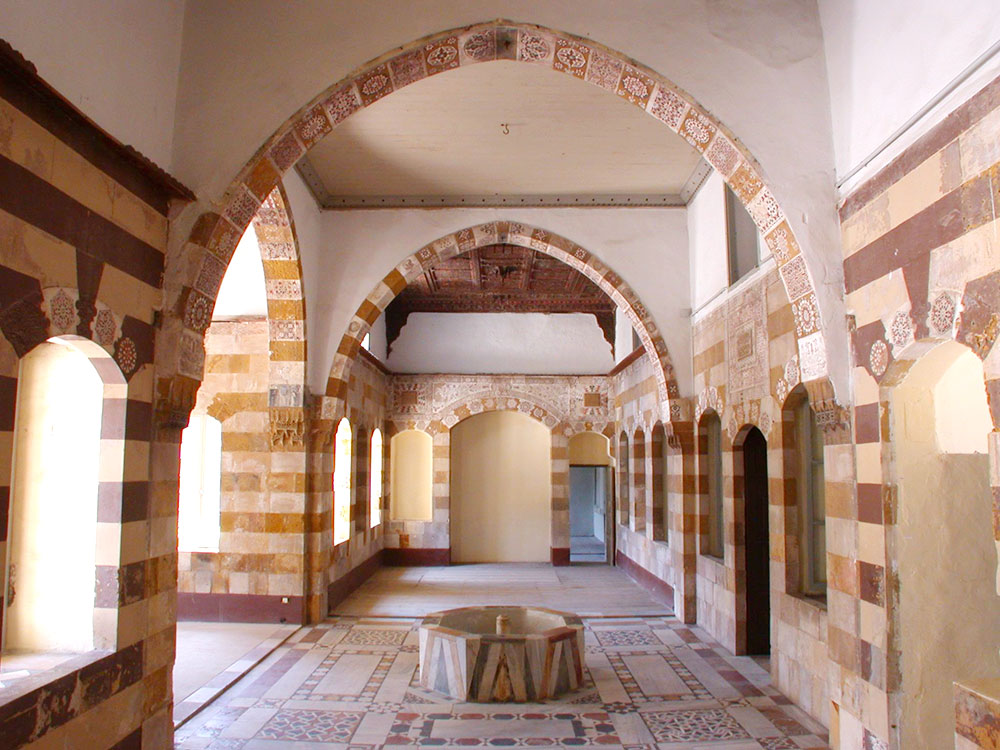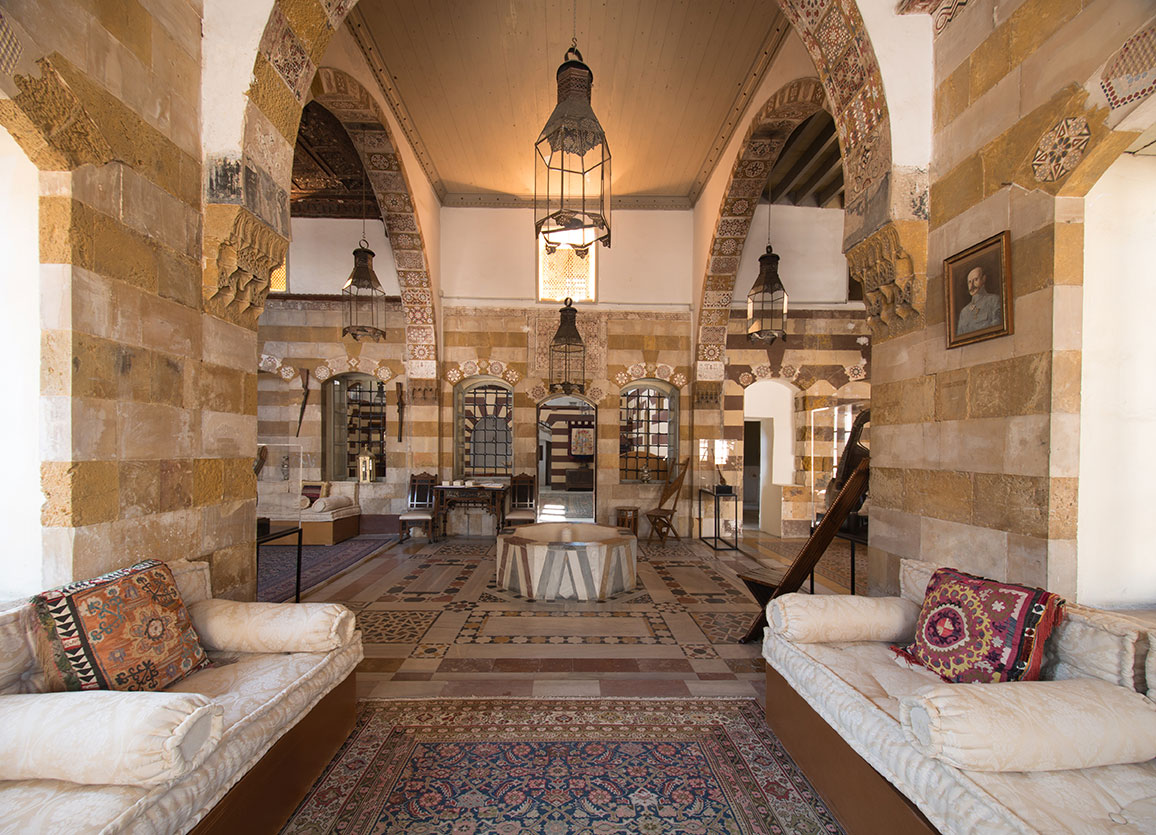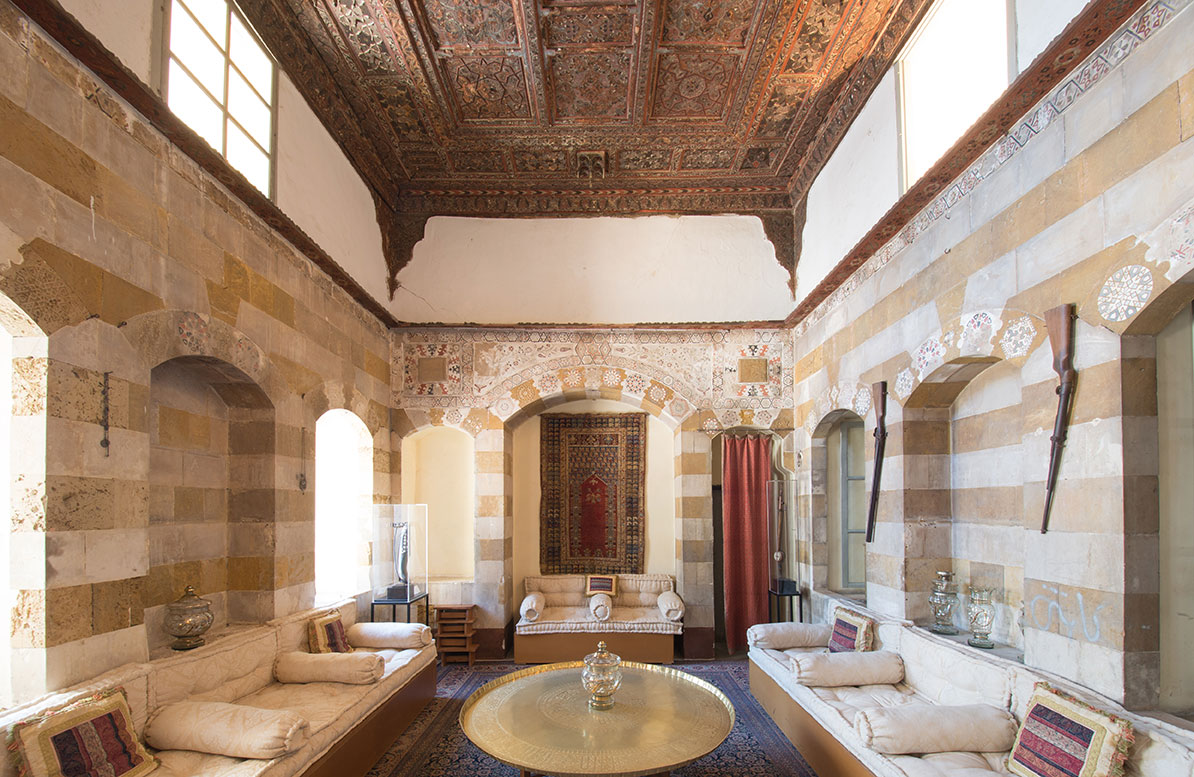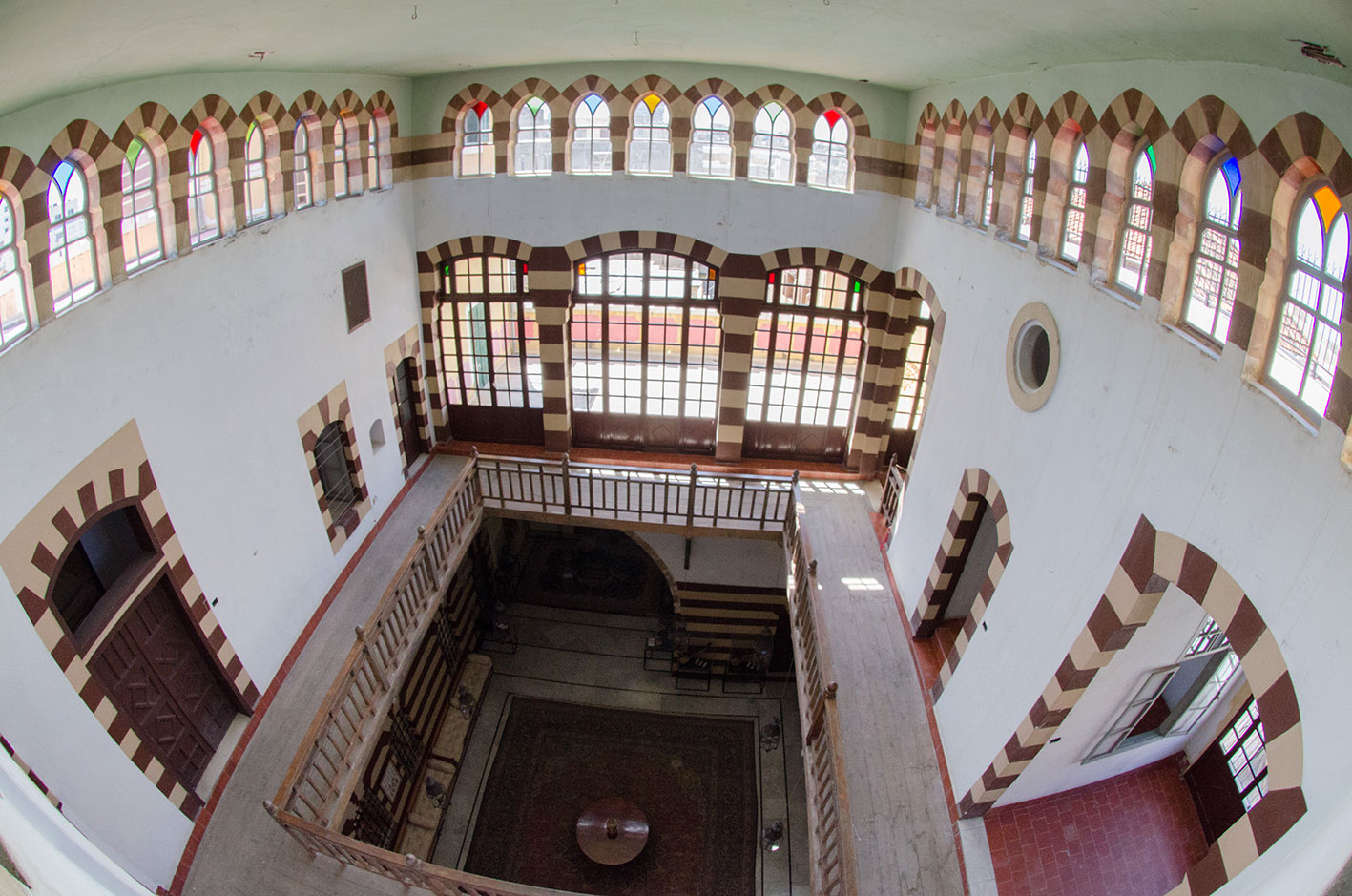Saida’s magnificent Debbane Palace is one of the few remaining examples of Ottoman architecture in the city. We met with Raphael Debbane who transformed it from a family home into a museum and opened it to the public.
 Debbane Palace is an 18th-century building in Saida, built by Ali Hammoud in 1721. The atmospheric space features typical diwans (Oriental style living rooms), a liwan (a long narrow-fronted hall), several rooms and an open-air courtyard, with the characteristic features of the Ottoman period – brown and white stripes of stone and intricate mosaic tiles making up the interior. Despite its location on the bustling streets of Saida, the house is a peaceful escape.
Debbane Palace is an 18th-century building in Saida, built by Ali Hammoud in 1721. The atmospheric space features typical diwans (Oriental style living rooms), a liwan (a long narrow-fronted hall), several rooms and an open-air courtyard, with the characteristic features of the Ottoman period – brown and white stripes of stone and intricate mosaic tiles making up the interior. Despite its location on the bustling streets of Saida, the house is a peaceful escape.
 Youssef Debbane bought the house in 1800 and the family lived there for generations. “We have fantastic memories in the house,” says Raphael Debbane, member of the board and chairman of the agricultural committee of the Chamber of Commerce, Industry and Agriculture of Beirut and Mount Lebanon, and president of the Debbane Foundation.
Youssef Debbane bought the house in 1800 and the family lived there for generations. “We have fantastic memories in the house,” says Raphael Debbane, member of the board and chairman of the agricultural committee of the Chamber of Commerce, Industry and Agriculture of Beirut and Mount Lebanon, and president of the Debbane Foundation.
I used to live there and got married there in 1967. It’s very big; I remember playing in the huge living room and terrace. Before 1975 we used to go to the house almost every weekend with our children.
When Debbane’s grandfather first moved into the building, he built another level to accommodate the whole family. “People specialized in architecture are surprised when they see how this floor was added without delineating the original Ottoman design; it’s very impressive,” he says.

We created the Debbane Foundation in 1999 with the aim to restore the house and transform it into a museum to showcase the architecture of Ottoman houses.
The Debbane Palace receives close to 2,000 visitors a month, with tourists from around the world visiting to see this monument to the past. “It’s really a prominent historical palace in Saida, we don’t have many of them,” Debbane says. “We believe that it is our duty to protect it and open it to the public to show the valuable history of Saida.”
Debbane is positive about the future of Saida with the numerous projects underway to preserve the city’s heritage. “We are lucky to have active deputies working hard for the sake of the town,” he says. “I visited the Museum of Saida one month ago. It’s very impressive – they have been doing archaeological research there for years and have found civilizations dating back 5,000 years.”
The museum, which is still under construction, is being built over the archaeological site with a glass viewing floor.

LoadingThey were found just 600 meters from our house. They call them the Sarcophagi of the Kings of Saida. In the Necropolis of Saida they found the Alexander Sarcophagus; it’s made from marble and is over 2,000 years old – it’s absolutely incredible.


